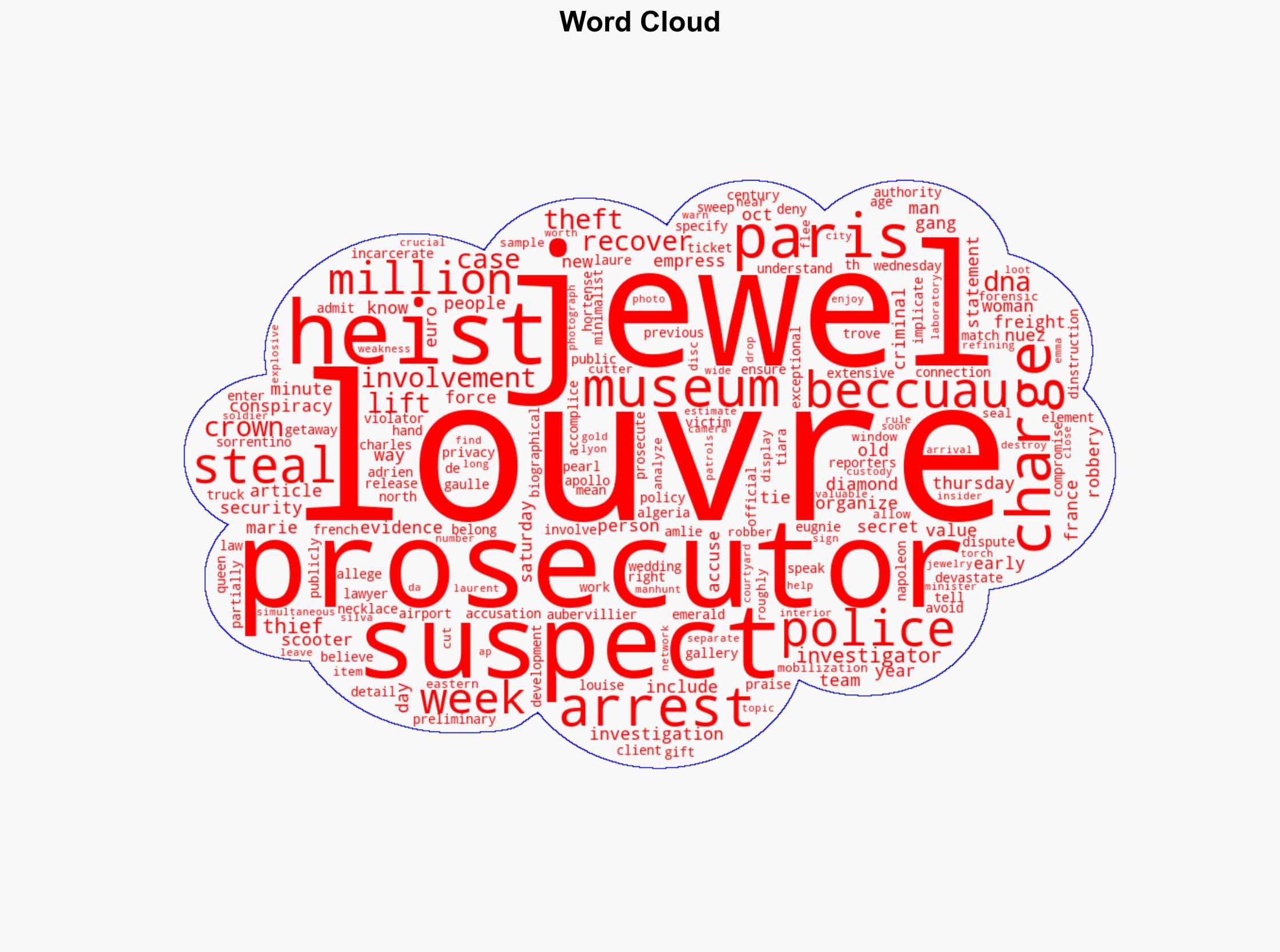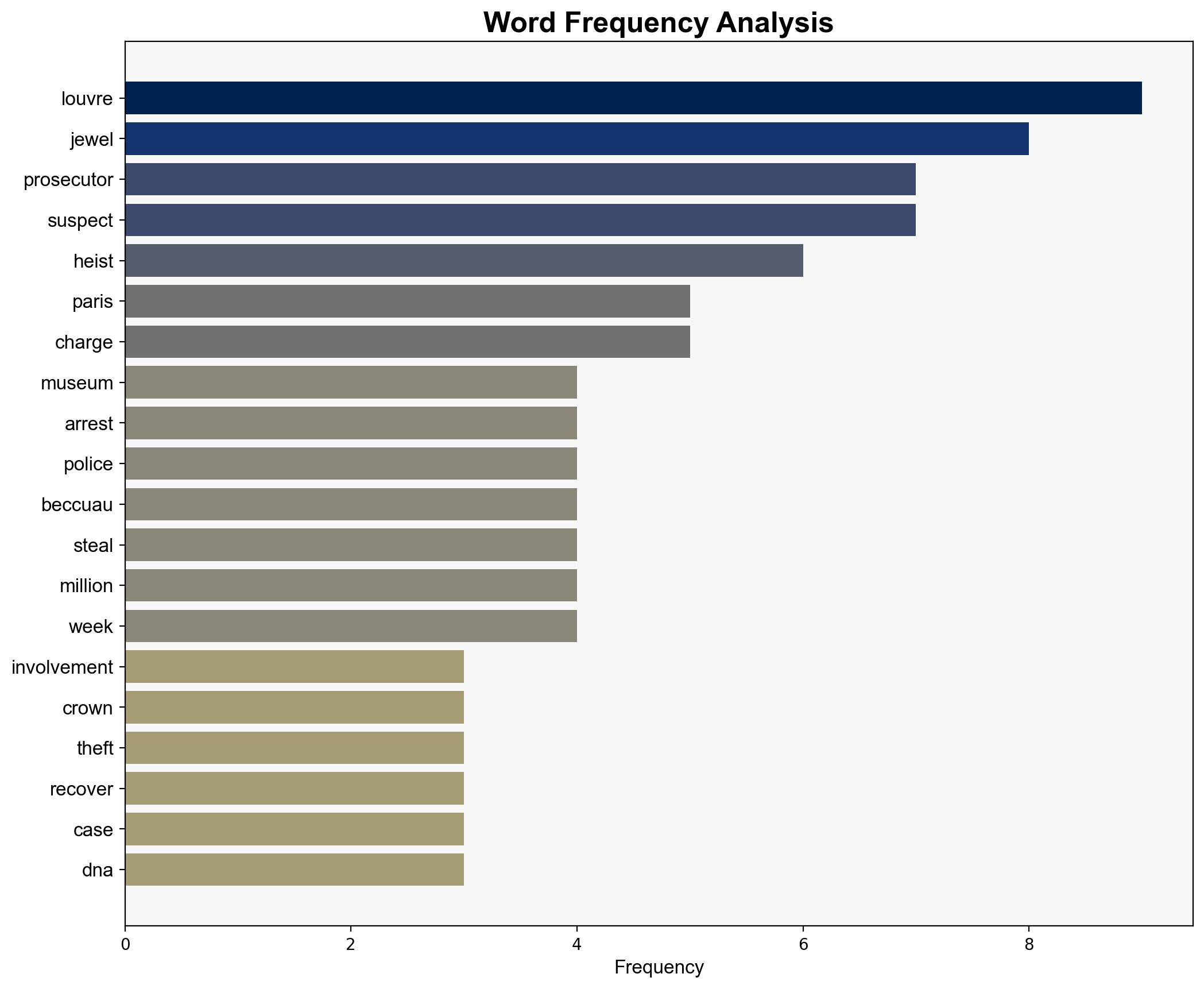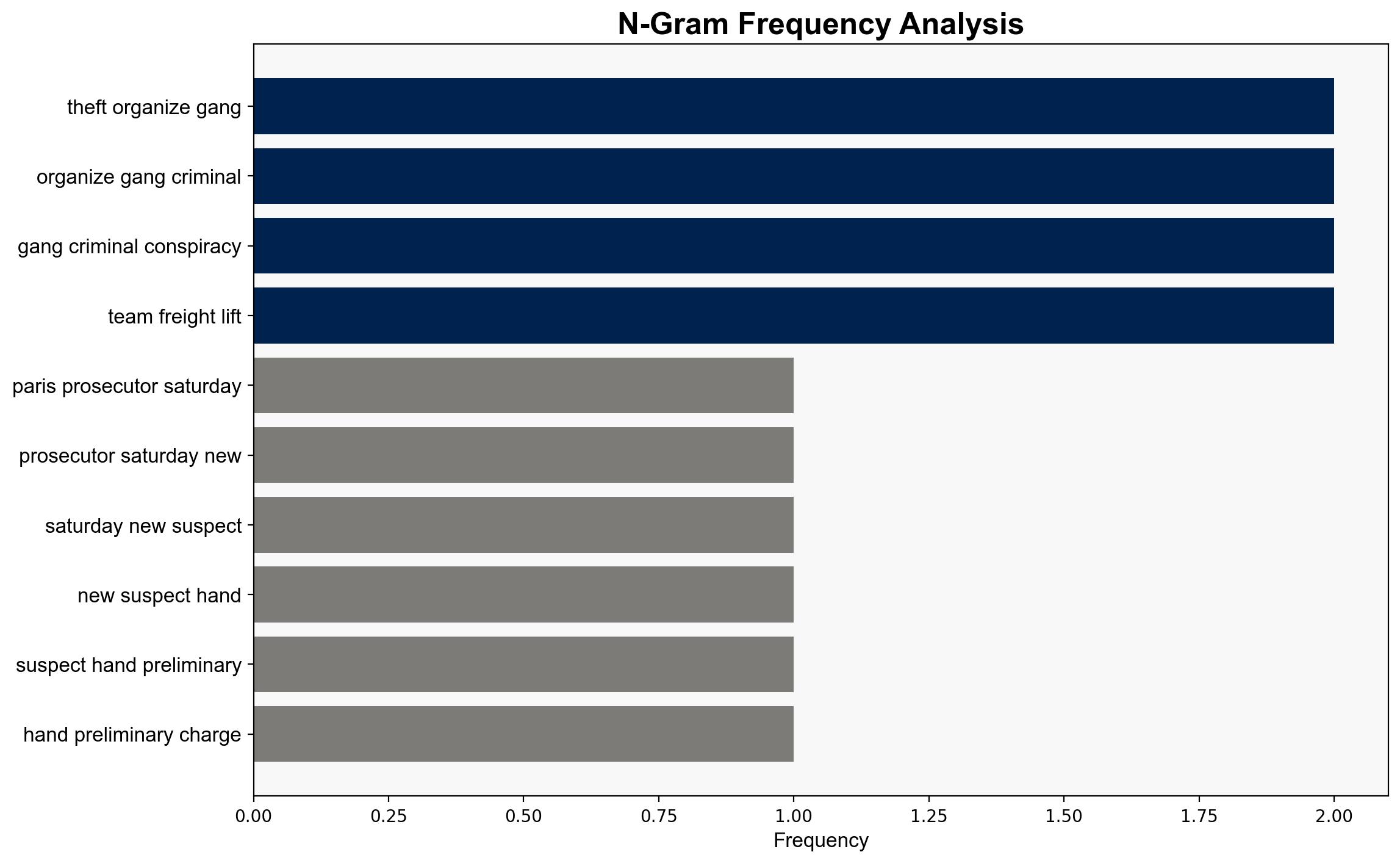Two New Suspects Handed Preliminary Charges in Louvre Jewels Heist Prosecutor Says – Insurance Journal
Published on: 2025-11-03
Intelligence Report: Two New Suspects Handed Preliminary Charges in Louvre Jewels Heist Prosecutor Says – Insurance Journal
1. BLUF (Bottom Line Up Front)
The most supported hypothesis is that the suspects are part of a larger organized criminal network with insider assistance. Confidence level is moderate due to limited public information and ongoing investigations. Recommended action is to enhance security protocols at cultural institutions and increase international cooperation for tracking stolen artifacts.
2. Competing Hypotheses
1. **Hypothesis A**: The suspects are part of an organized criminal network that orchestrated the heist with insider assistance.
2. **Hypothesis B**: The suspects acted independently, exploiting known security weaknesses without insider help.
Using Analysis of Competing Hypotheses (ACH), Hypothesis A is better supported by the complexity of the heist, the use of specialized equipment, and the possibility of insider knowledge suggested by the prosecutor’s statement. Hypothesis B is less supported due to the high level of coordination and planning required, which is atypical for independent actors.
3. Key Assumptions and Red Flags
– **Assumptions**: The heist required detailed knowledge of the museum’s security systems and operations. The suspects have connections to a broader network.
– **Red Flags**: Lack of recovered jewels suggests potential deception or misdirection. The minimal public disclosure of suspect details could indicate ongoing undercover operations or legal constraints.
– **Blind Spots**: The extent of insider involvement remains unclear, and there is limited information on the suspects’ backgrounds and motivations.
4. Implications and Strategic Risks
– **Economic**: The theft of high-value cultural artifacts can impact the art market and insurance sectors.
– **Geopolitical**: International relations may be strained if stolen artifacts are trafficked across borders.
– **Psychological**: Public perception of security at cultural institutions may be negatively affected, reducing visitor confidence.
– **Cascading Threats**: Successful heists may embolden other criminal networks to target similar institutions.
5. Recommendations and Outlook
- Enhance security measures at cultural institutions, including advanced surveillance and staff vetting.
- Strengthen international collaboration to track and recover stolen artifacts.
- Scenario Projections:
- **Best Case**: Recovery of stolen jewels and dismantling of the criminal network.
- **Worst Case**: Failure to recover artifacts, leading to increased criminal activity targeting cultural sites.
- **Most Likely**: Partial recovery of items with ongoing investigations revealing broader criminal connections.
6. Key Individuals and Entities
– Laure Beccuau
– Adrien Sorrentino
– Laurent Nunez
7. Thematic Tags
national security threats, organized crime, cultural heritage protection, international law enforcement cooperation




